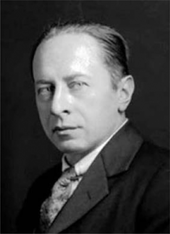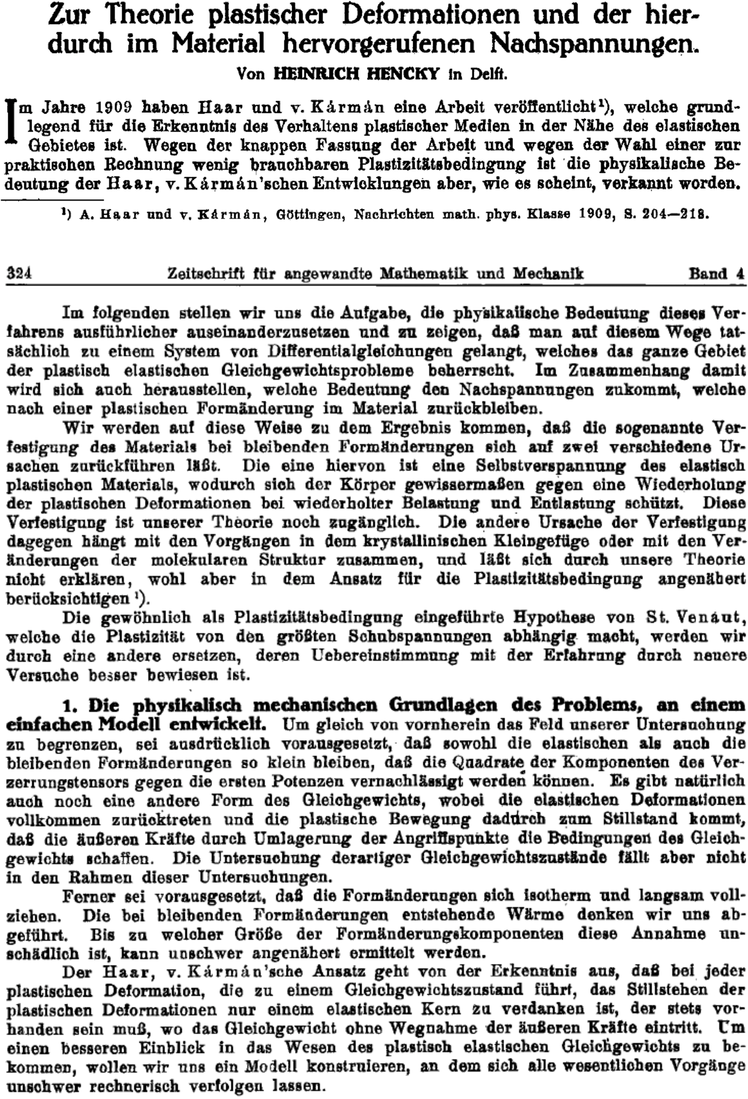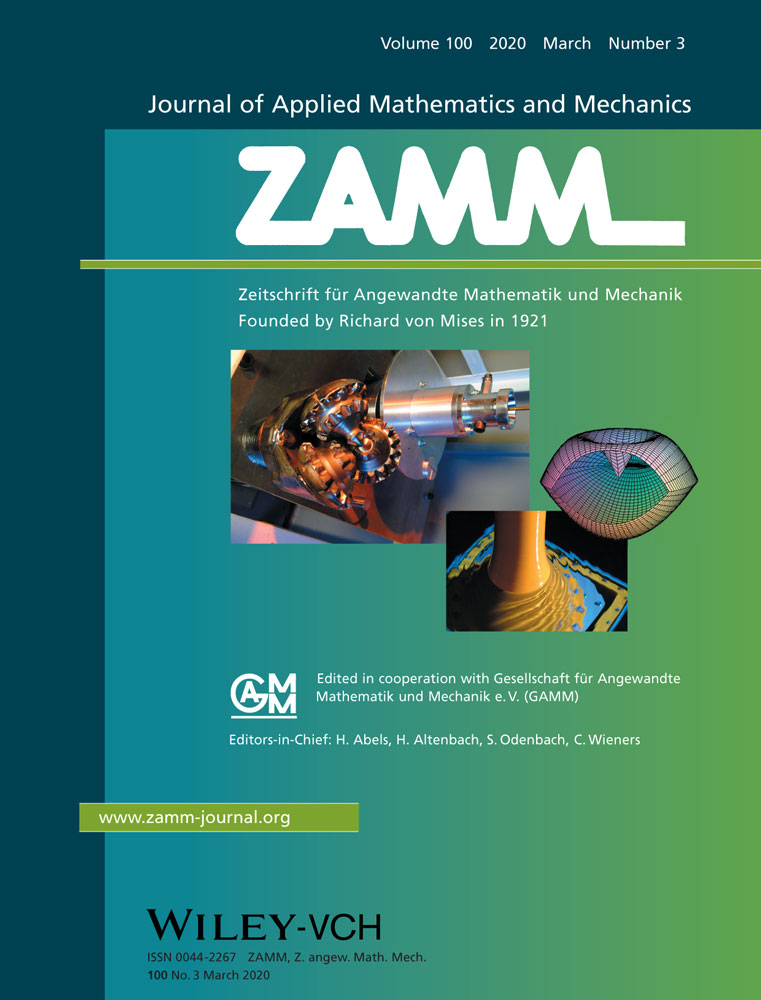Editorial
We start this third issue of volume 100 with a re-publication from 1924:
Heinrich Hencky - Zur Theorie plastischer Deformationen und der hierdurch im Material hervorgerufenen Nachspannungen (ZAMM 4:323–334).
This work is first translated into English and then discussed.
The scientific life of Heinrich Hencky was not always straightforward, seeing as he was struggling with different adversities his entire lifetime. During the 1920s of the last century, he published some fundamental papers in the ZAMM. Unfortunately, these articles were written in German which was the scientific language of mathematics, mechanics and engineering back those days. We hope that the non-German speaking community, with help of the translation, will get a more detailed insight in fundamental problems of that time and Hencky's ideas to solve them.

Heinrich Hencky (∗November 2, 1885, in Ansbach, Bavaria, Germany; †July 6, 1951, in Gries, Tyrol, Austria) was a German engineer who made considerable contributions to plasticity, continuum mechanics, and plate theory among others. He studied civil engineering at the Technische Hochschule Munich. In 1912, he moved to the Technische Hochschule in Darmstadt as “design engineer and assistant for engineering sciences” and received his doctorate in 1913 with a thesis on the numerical calculation of stresses in thin plates. In 1914, he was employed as a railway engineer in Kharkov (Russian Empire). His career was terminated during World War I after which he returned to Germany. His plan to regain foothold as a test engineer in Warnemünde in a project for a seaplane failed because of the general demobilization of Germany. In 1919, Hencky returned to the Technische Hochschule Darmstadt and in 1920, he moved to Dresden. He wrote his habilitation on stability problems of elastic structures which he defended in 1921. After that, he was looking for a permanent position: at first in Germany, later in the Netherlands (Technical University of Delft) and in the USA (MIT in Cambridge, Massachusetts). His last contract ended in 1932. Subsequently, he tried to survive as a farmer - with occasional contracts as a consultant. After 3 years, he was invited by Boris G. Galerkin and Hencky accepted a position as professor for Engineering Mechanics at the Kharkov Polytechnic Institute and later at the Institute of Mechanics of Lomonosov University in Moscow headed by Alexei A. Ilyushin. Here he improved the Soviet Union lightweight (airplane) construction by applying his deformation theory. In 1938, he and his family were sent back to Germany and he could find a position at MAN Company in Gustavsburg.
Holm Altenbach & Otto T. Bruhns





